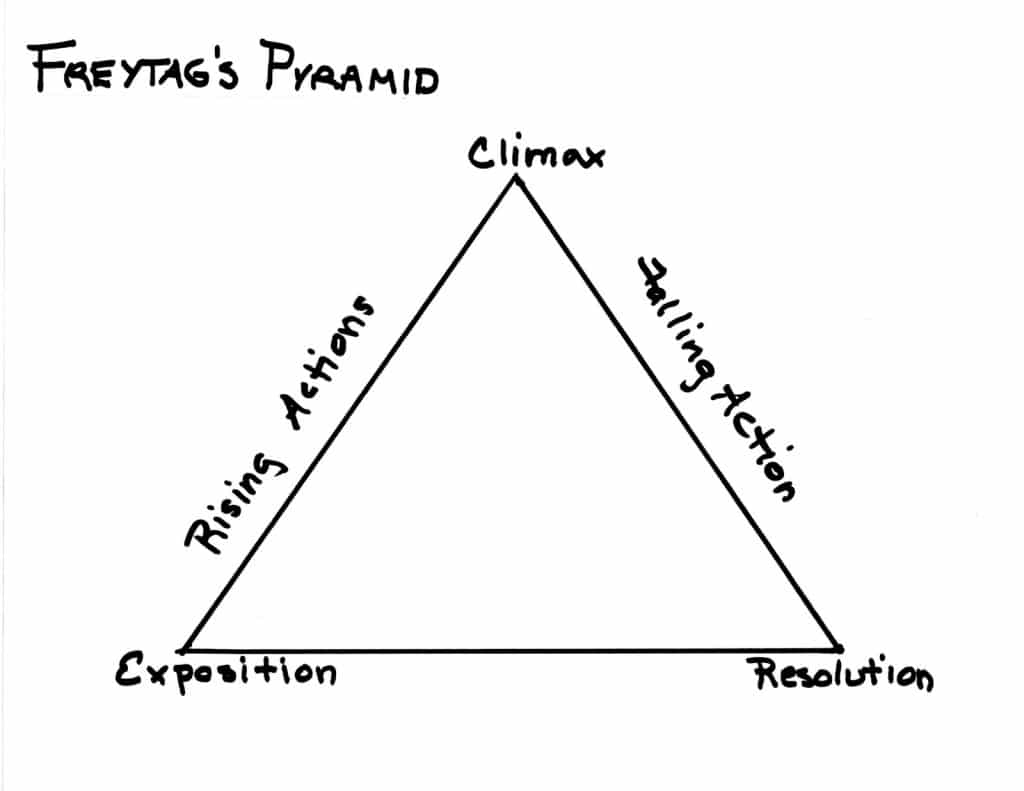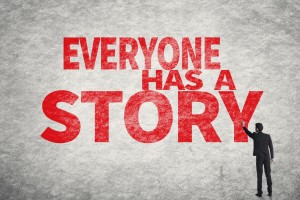In her excellent book, Wired for Story, Lisa Cron describes how we can go weeks without food, days without drinking, but only about 35 seconds without finding meaning in something. We do this for one reason: survival.
We are biologically programmed to learn through three-act stories: Set-up, conflict, resolution. This three-part story structure is our default problem solving setting. It is how our brain auto-navigates our surroundings to transform ambiguity into meaning.
Beginning, Middle and End
Aristotle described story structure as set-up, confrontation and resolution.
German philosopher Georg Hagel ‘s science of logic, known as the Hegelian Dialectic, is an approach to reasoned arguments in the pursuit of truth. Also known as the Triad, it process is characterized as thesis, antithesis, synthesis.
German novelist and playwright Gustav Freytag outlined the Dramatic Structure that most story artists agree with today. It is a five part construction with three primary elements: EXPOSITION, rising action, CLIMAX, falling action and DENOUEMENT. His structure is known as the Freytag Pyramid.

Trey Parker, creator of South Park, uses an “And, But and Therefore” organization for each script. This was brought to my attention in Randy Olson’s terrific book. Connection: Hollywood Storytelling Meets Critical Thinking.
This three-part form is not just found in writing. Wolfgang Amadeus Mozart and his contemporaries were guided by the structure of exposition, development and resolution when composing sonatas.
In photography, people use the rule of thirds – placing your subject in either the left or right side of the frame – when composing a photo to create more tension, energy and interest. I think the rule of thirds relates to three-act story structure because the imbalance of subject – not being placed in the center of the pic – creates the same tension and energy that conflict/confrontation/development/antithesis does for narrative. That’s probably why a great picture is worth a thousand words, because it presents your brain with the visual content from which it creates a story to find meaning and truth in the image.
In sales, I once had a client describe the process as “Find the hurt, amplify the pain, and heal the wound.” See the set-up, conflict and resolution in his approach?
The next time you have a story to tell, don’t worry about being an expert storyteller. Simply hijack the mind by giving it what it wants, what it needs… a story with a beginning, middle and an end. You’ll know when it works when your audience goes, “Uh-huh, Uh-oh, Aha!”
You’ll even be more popular at parties.












at 8:00 am
[…] The order of ABT statements is crucial in story-telling! Credit: businessofstory.com […]
at 7:25 pm
[…] The order of ABT statements is crucial in story-telling! Credit: businessofstory.com […]